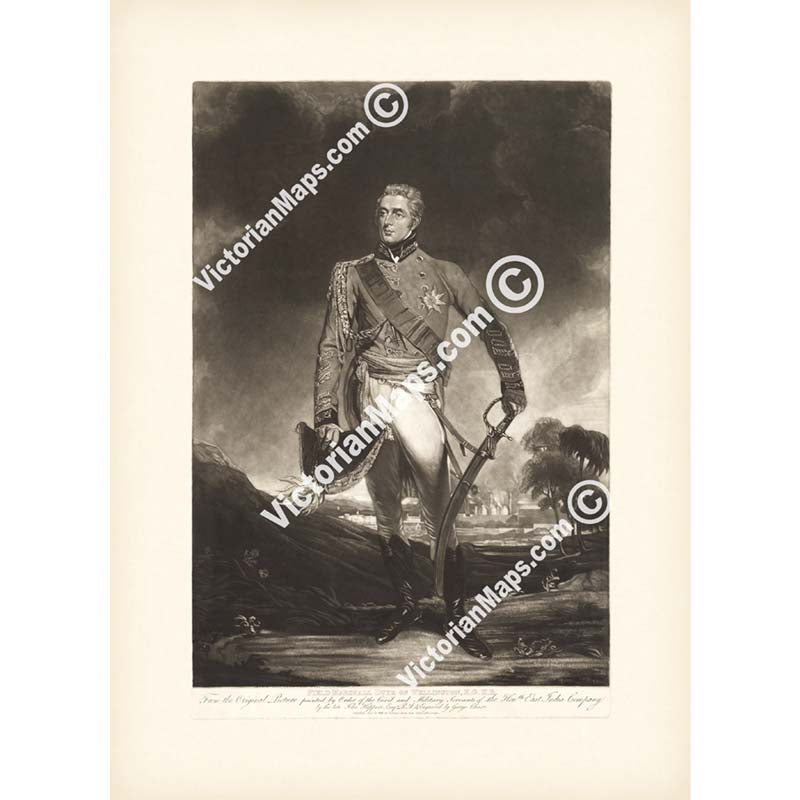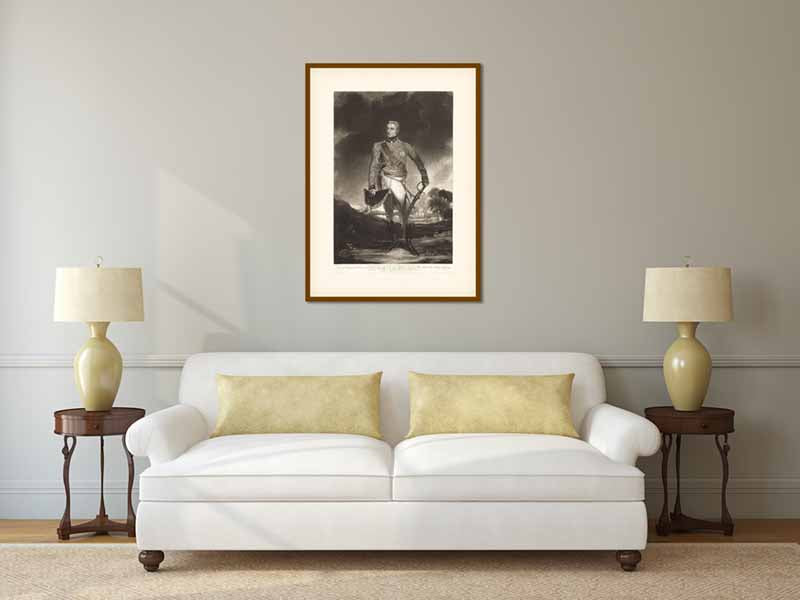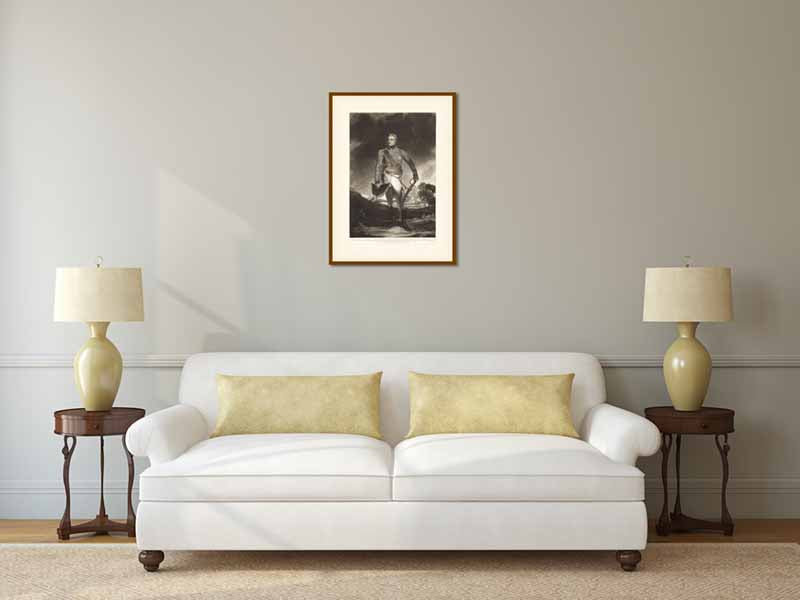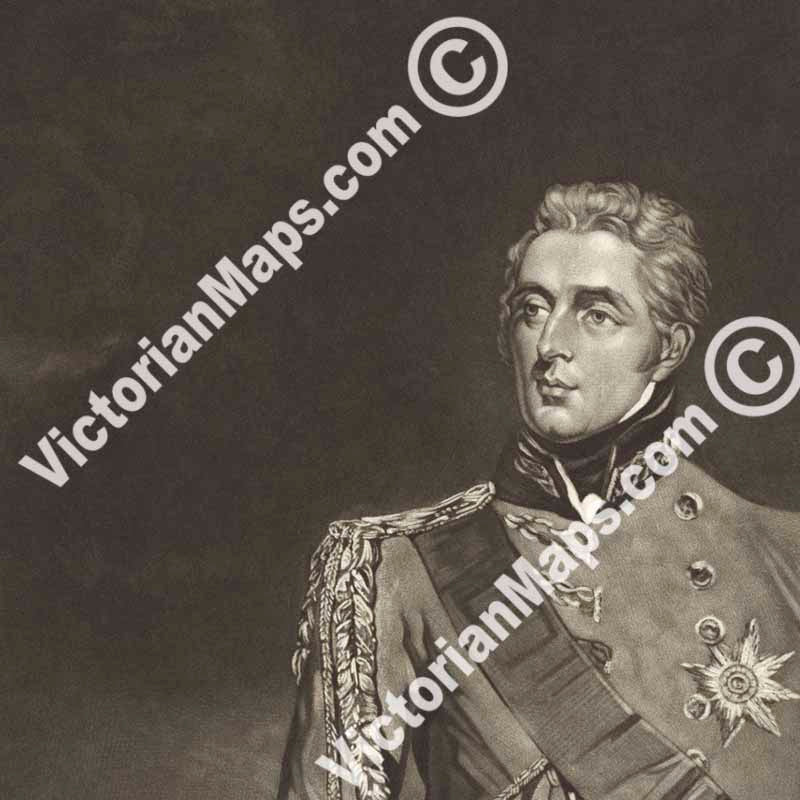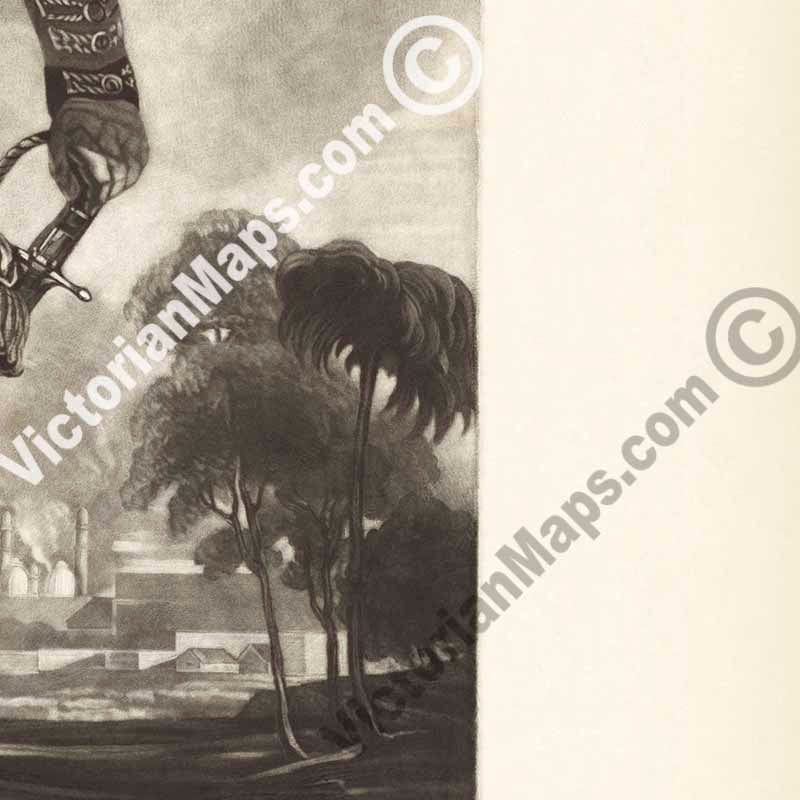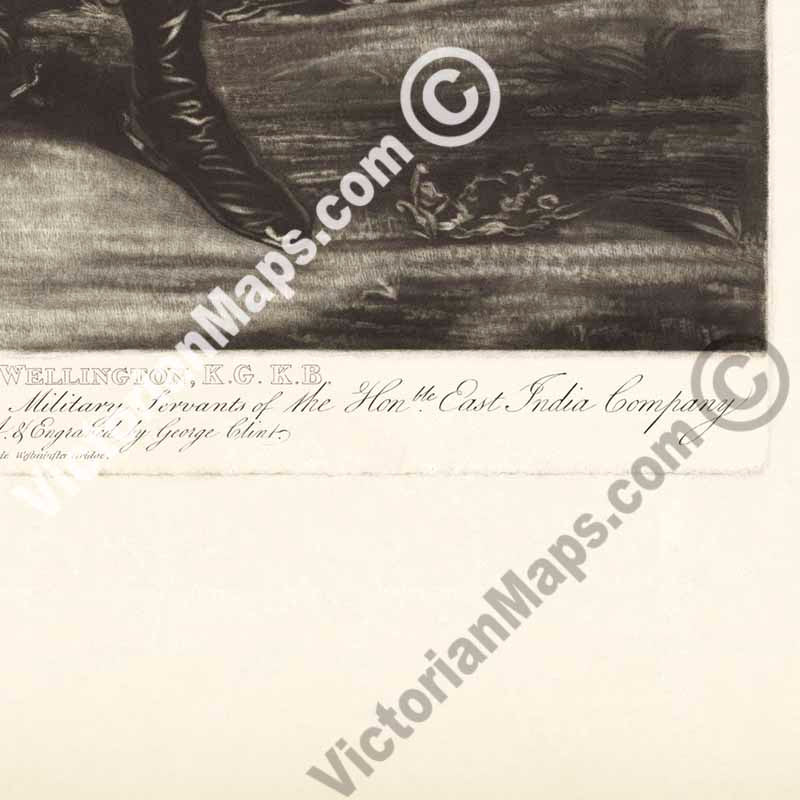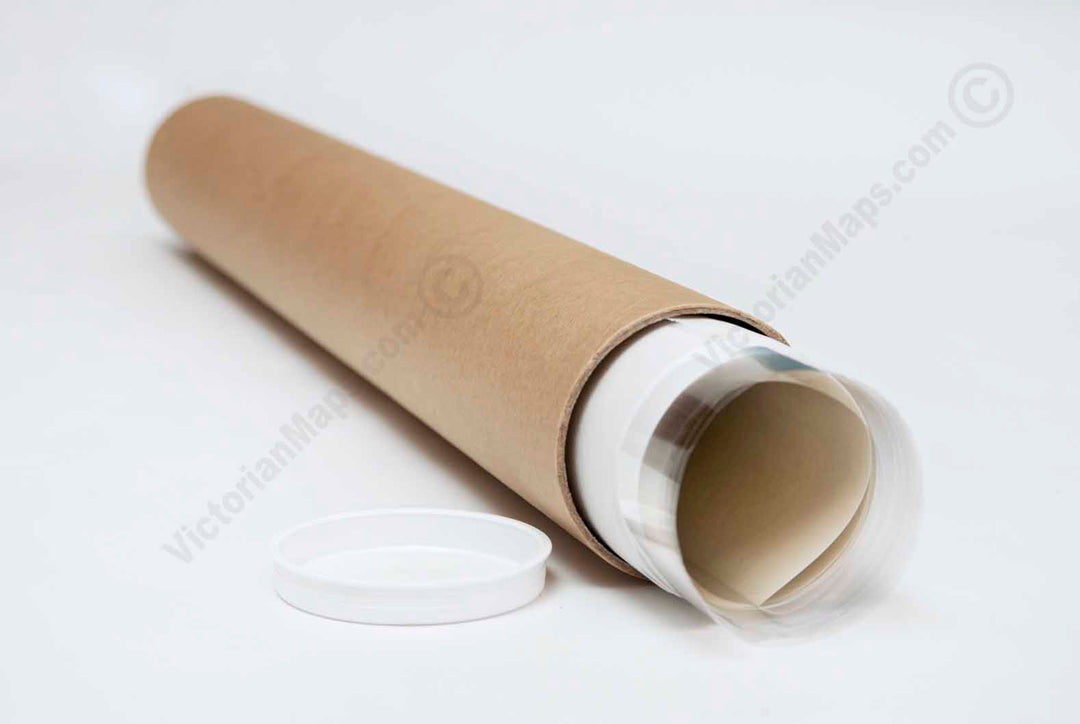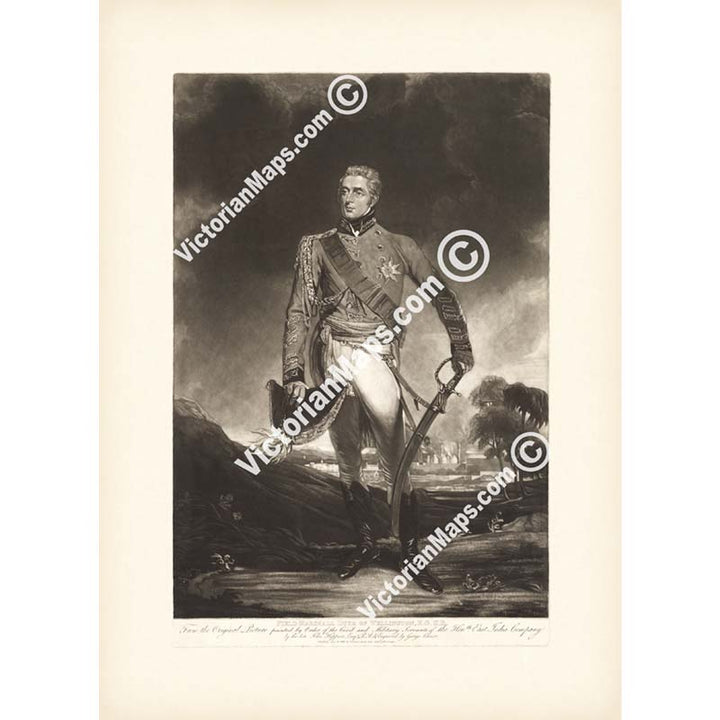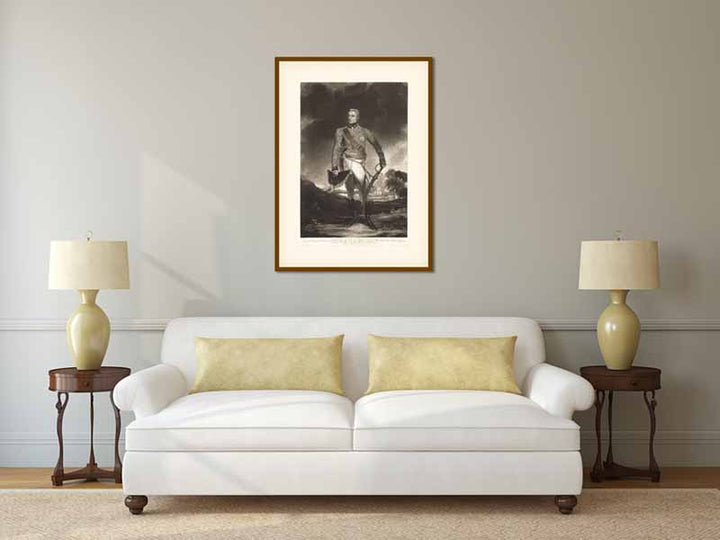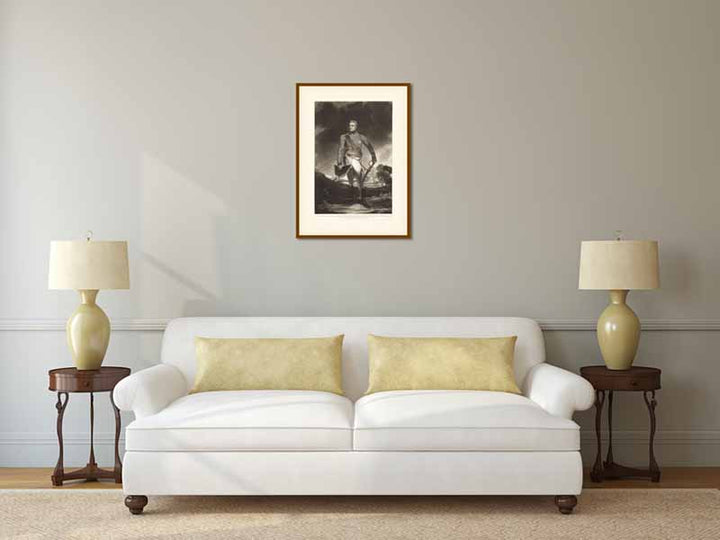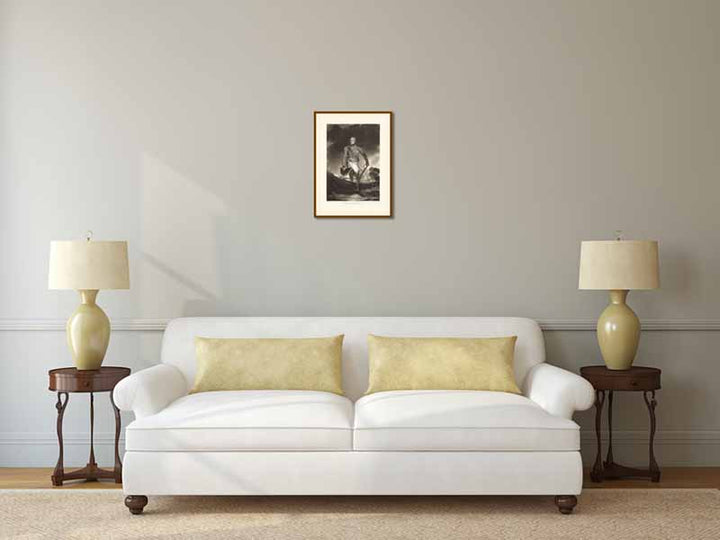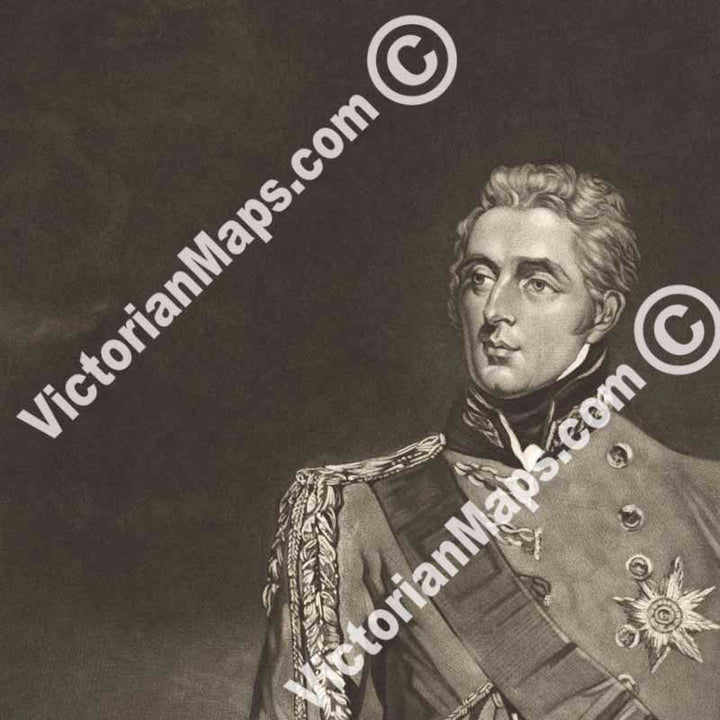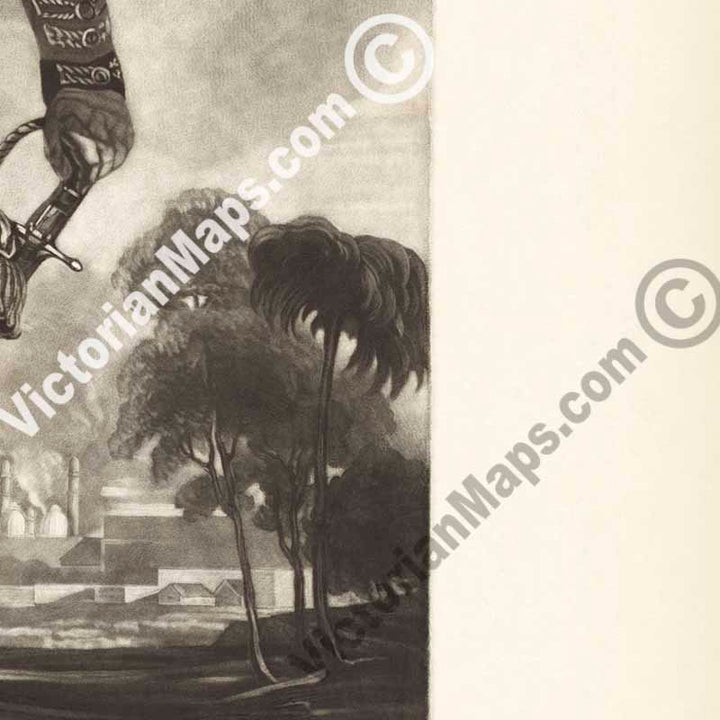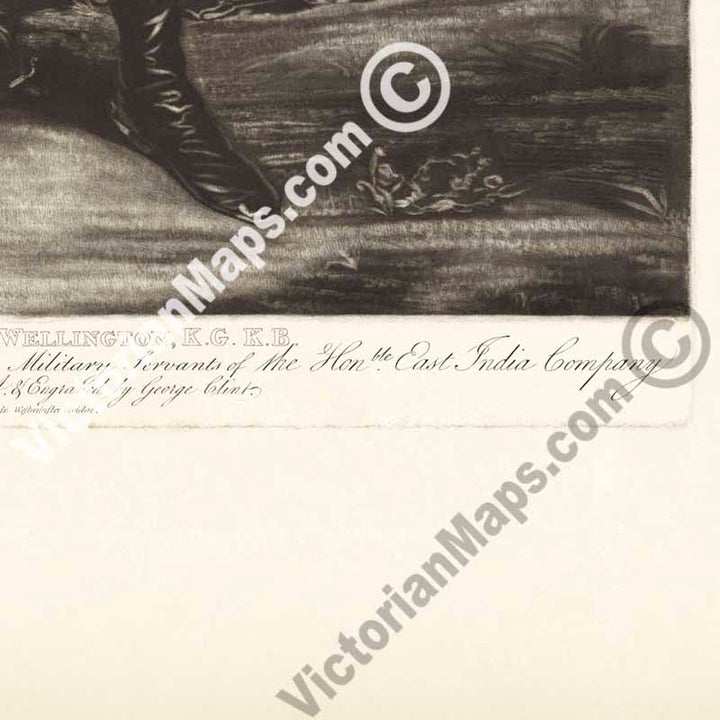Field Marshall Duke of Wellington, K.G. K.B. - mezzotint portrait by G. Clint (after J. Hoppner), published T. Palser, 1814 art print poster canvas gift
- High-quality product
- Perfect gift
- In stock, ready to ship
- Backordered, shipping soon
Field Marshall Duke of Wellington, K.G. K.B.
"From the Original Picture painted by Order of the Civil and Military Servants of the Honourable East India Company, by the late John Hoppner, Esq. R.A. Engraved by George Clint. Published August 20 1814 by T. Palser, Surry Side Westminster Bridge."
An iconic mezzotint portrait of Arthur Wellesley, 1st Duke of Wellington, engraved by George Clint after painting of John Hoppner, and published by Thomas Palser in 1814, in London.
The original portrait has been painted by John Hoppner in 1808, in England. Duke of Wellington shown in uniform with braiding, sash and star, whole-length standing in front of a landscape in India and domed palace burning; a tricorn hat in his right hand, his left hand is on captured Tipu sultan's saber.
Arthur Wellesley, 1st Duke of Wellington (1769 – 1852) - was a British soldier and statesman. He commanded the allied army which, together with a Prussian army under Prince Blucher, defeated Napoleon at Waterloo. Arthur was born in Dublin a sixth of nine children to the Earl and Countess of Mornington. He was unhappy studying in Eton and, after his father death in 1781, remained lonely and awkward until his enrollment into a French military academy in Angers, where he became a good horseman and proficient in French. Shortly after, Arthur has started his military career as aide-de-camp to Lord Buckingham and was soon promoted lieutenant. His first battle experience came in Flanders in 1794. Later in 1798, as a colonel, Arthur Wellesley took part in a war against Tipu Sultan of Mysore. He had continued as a governor and commander of British forces in India until 1804. Wellesley’s experience in India highly influenced his military tactics as well as his character: strong sense of discipline, diplomacy and comprehensive preparations. From 1807, Wellesley became involved in Peninsular War against the French. He was created Duke of Wellington after liberating much of Spain and Napoleon’s defeat and abdication. In 1815 Napoleon escaped and returned to France, regaining control of the country and the French army. Wellington arrived to Netherlands and took command of the allied Anglo-Dutch-German army. Wellington and Napoleon finally met at the Battle of Waterloo on 18th June of 1815. During the day-long battle, Anglo-allied army withstood multiple and fierce French attacks. Towards the end of the day, with heavy losses on both sides, Allied army with aid of arriving Prussian forces overcame the French and achieved a definitive victory. Wellington has effectively ended the Napoleonic Wars by defeating Napoleon at the Battle of Waterloo. Throughout his military career Wellington participated in 60 battles. He is regarded as one of the greatest defensive commanders of all times, his tactics and battles are still studied in military academies. Duke of Wellington was also a leading political figure in 19th century Britain, twice serving as a prime minister. He remained Commander-in-Chief of the British Army until his death.
John Hoppner (1758 - 1810) was an English portrait painter. He was born in London to German parents and, with patronage of King George and amid rumours of being his illegitimate son, entered the Royal Academy in 1775 soon receiving a gold medal for his historical painting of King Lear. Hoppner was made a portrait painter to the Prince of Wales in 1789. He had many famous persons of the time sitting for his portraits including Lord Nelson, Sir Walter Scott and Duke of Wellington.
This poster is a high quality "giclée" reproduction of a restored antique original, custom-printed on Standard Single-weight Matt Coated art paper 140gsm or Heavyweight Matt Coated art paper 230gsm (more of a thin card density), or superb Epson Matt Canvas 320gsm, according to your choice. We use the latest UltraChromeHDX pigment inks which guarantee 60 years of colour permanence (up to 200 years fade-proof for colour prints). This poster is suitable for mounting and framing, as well as direct display on a wall.
All prints are made to order and carefully checked before posting. Our restored charts and maps are exclusive to VictorianMaps and not available anywhere else. There are no watermarks on the prints.
Combined shipping available—add all items to your basket to see the adjusted rate. Any extra postage paid will be refunded.
Returns:
If you're not satisfied, return within 14 days for a full refund.
For framing, we recommend the 230gsm paper or 320gsm canvas. The 140gsm paper is best for DIY framing or wall tacking.


